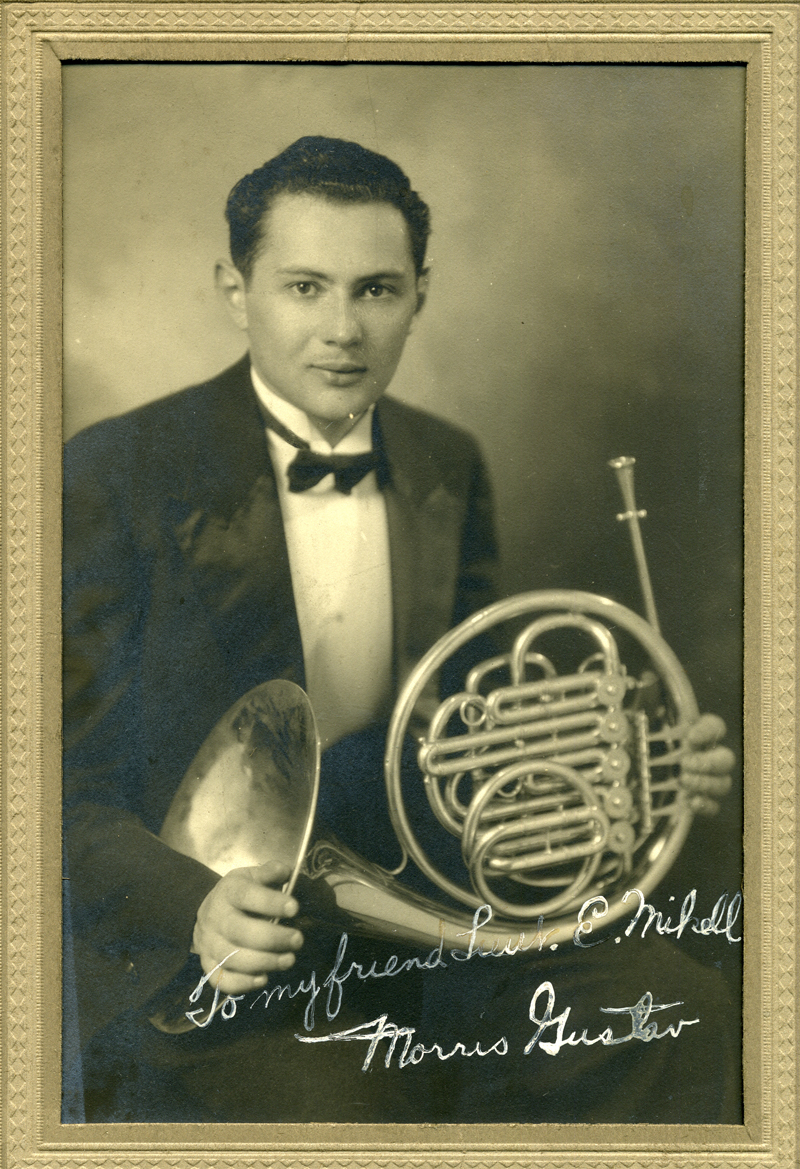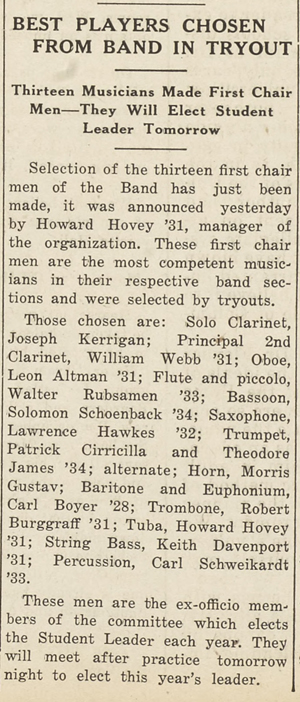 |
Morris Gustav was enrolled in the Institute of Musical Arts (now Juilliard School of Music) Diploma French Horn program from February 1929 to June 1929 where he was a student of Lorenzo Sansone. In the above photo he is holding a Sansone five valve single B-flat horn. The following year he was selected to be principal horn of the Columbia University band although no record has been found that he was a Columbia student.1 The dedication to Lt. Francis Eugene Mikell suggests that he had been a member of one of the Army Cadet Bands under Lt. Mikell's direction (see below). No record has been found that Mr. Gustav pursued a career in music or played professionally.2 |
 Columbia Spectator, November 24, 1930 |
|
|
|
|
 New York Age, July 29, 1922 |
Lt. Mikell was also director of the 369th Infantry Band which played a number of engagements in various locations in and around New York in the summer of 1922. The following January he announced the organization of a cadet band of at least one hundred boys in New York City for the 369th. In April the newly-organized cadet band and drum corps comprising 138 boys age 10 through 16 along with the regimental 30-member band and 20-member drum corps of enlisted men all under the direction of Lt. Mikell marched through the streets of Harlem. During the Summer months the regimental band played various engagements including international polo games, a military reception at the request of Gen. Bridgeman, and a vaudeville show. He also took charge of the Progressive Elks Band of Jersey City, began training a boys' band in Newark, and opened his private studio at his home on W. 52nd Street. |
|